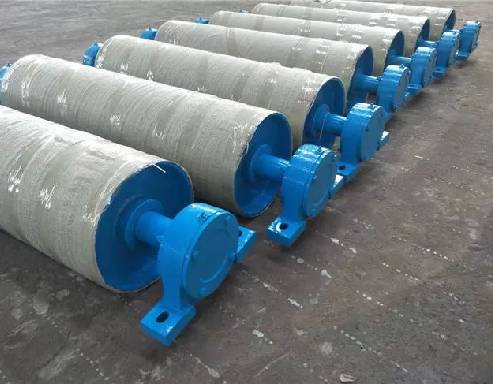 Afrikaans
Afrikaans  Albanian
Albanian  Amharic
Amharic  Arabic
Arabic  Armenian
Armenian  Azerbaijani
Azerbaijani  Basque
Basque  Belarusian
Belarusian  Bengali
Bengali  Bosnian
Bosnian  Bulgarian
Bulgarian  Catalan
Catalan  Cebuano
Cebuano  Corsican
Corsican  Croatian
Croatian  Czech
Czech  Danish
Danish  Dutch
Dutch  English
English  Esperanto
Esperanto  Estonian
Estonian  Finnish
Finnish  French
French  Frisian
Frisian  Galician
Galician  Georgian
Georgian  German
German  Greek
Greek  Gujarati
Gujarati  Haitian Creole
Haitian Creole  hausa
hausa  hawaiian
hawaiian  Hebrew
Hebrew  Hindi
Hindi  Miao
Miao  Hungarian
Hungarian  Icelandic
Icelandic  igbo
igbo  Indonesian
Indonesian  irish
irish  Italian
Italian  Japanese
Japanese  Javanese
Javanese  Kannada
Kannada  kazakh
kazakh  Khmer
Khmer  Rwandese
Rwandese  Korean
Korean  Kurdish
Kurdish  Kyrgyz
Kyrgyz  Lao
Lao  Latin
Latin  Latvian
Latvian  Lithuanian
Lithuanian  Luxembourgish
Luxembourgish  Macedonian
Macedonian  Malgashi
Malgashi  Malay
Malay  Malayalam
Malayalam  Maltese
Maltese  Maori
Maori  Marathi
Marathi  Mongolian
Mongolian  Myanmar
Myanmar  Nepali
Nepali  Norwegian
Norwegian  Norwegian
Norwegian  Occitan
Occitan  Pashto
Pashto  Persian
Persian  Polish
Polish  Portuguese
Portuguese  Punjabi
Punjabi  Romanian
Romanian  Russian
Russian  Samoan
Samoan  Scottish Gaelic
Scottish Gaelic  Serbian
Serbian  Sesotho
Sesotho  Shona
Shona  Sindhi
Sindhi  Sinhala
Sinhala  Slovak
Slovak  Slovenian
Slovenian  Somali
Somali  Spanish
Spanish  Sundanese
Sundanese  Swahili
Swahili  Swedish
Swedish  Tagalog
Tagalog  Tajik
Tajik  Tamil
Tamil  Tatar
Tatar  Telugu
Telugu  Thai
Thai  Turkish
Turkish  Turkmen
Turkmen  Ukrainian
Ukrainian  Urdu
Urdu  Uighur
Uighur  Uzbek
Uzbek  Vietnamese
Vietnamese  Welsh
Welsh  Bantu
Bantu  Yiddish
Yiddish  Yoruba
Yoruba  Zulu
Zulu belt conveyor roller types
Understanding Belt Conveyor Roller Types
Belt conveyors are an essential component in various industries, facilitating the efficient transportation of materials. A critical aspect of their design and operation is the conveyor roller, which supports the belt and the materials being transported. Understanding the various types of belt conveyor rollers is crucial for selecting the appropriate system for specific applications.
1. Standard Rollers
Standard rollers are the most common type used in belt conveyors. They consist of a steel tube with a bearing inside, allowing them to rotate freely. Standard rollers come in various dimensions and configurations, making them suitable for transporting a wide range of materials, including bulk commodities, packaged goods, and more. Their versatility and durability make them ideal for many conveyor systems.
2. Impact Rollers
Impact rollers are specifically designed to absorb the impact of heavy loads as they are loaded onto the conveyor belt. Typically located in loading zones, these rollers are equipped with additional cushioning materials to reduce shock, which prevents belt sagging and prolongs the life of both the belt and the rollers. This type of roller is essential for applications involving heavy or bulk materials, such as mining or construction sites.
Return rollers are positioned on the underside of the conveyor belt, supporting the return trip of the belt. Their main function is to keep the belt aligned and minimize sag, ensuring efficient operation. Return rollers can be either plain or rubber-coated, with the latter providing additional grip and reducing wear on the belt. They play a vital role in enhancing the overall efficiency and longevity of the conveyor system.
belt conveyor roller types

4. Training Rollers
Training rollers, also known as self-aligning rollers or side rollers, are utilized to keep the conveyor belt centered on the rollers. These rollers slope inward to guide the belt back to its intended path if it begins to drift. This is particularly beneficial in environments where product shifts or material loading may cause misalignment. Proper use of training rollers can significantly reduce wear and increase the efficiency of the conveyor system.
5. Specialty Rollers
In addition to the standard types of rollers, there are also specialty rollers designed for specific applications. For example, spiral rollers are used in systems where the belt must navigate tight turns, while plastic conveyor rollers can be employed in applications requiring resistance to corrosion or contamination. Furthermore, anti-static rollers are essential in industries dealing with flammable materials, as they minimize the risk of static discharge.
6. Choosing the Right Roller
When selecting the right type of conveyor roller for a specific application, several factors should be considered. These include the weight and nature of the materials being transported, the environmental conditions (e.g., temperature, moisture), and the operational speed of the conveyor. Additionally, maintenance requirements and costs should also factor into the decision, as different rollers may demand varying levels of upkeep.
Conclusion
Understanding the different types of belt conveyor rollers is crucial for selecting the right components for any conveyor system. Whether standard, impact, return, training, or specialty rollers, each type serves a specific purpose and contributes to the efficient movement of materials. By carefully considering the needs of each application, businesses can enhance the reliability and performance of their material handling systems, leading to increased productivity and reduced operational costs.
-
Revolutionizing Conveyor Reliability with Advanced Rubber Lagging PulleysNewsJul.22,2025
-
Powering Precision and Durability with Expert Manufacturers of Conveyor ComponentsNewsJul.22,2025
-
Optimizing Conveyor Systems with Advanced Conveyor AccessoriesNewsJul.22,2025
-
Maximize Conveyor Efficiency with Quality Conveyor Idler PulleysNewsJul.22,2025
-
Future-Proof Your Conveyor System with High-Performance Polyurethane RollerNewsJul.22,2025
-
Driving Efficiency Forward with Quality Idlers and RollersNewsJul.22,2025





























